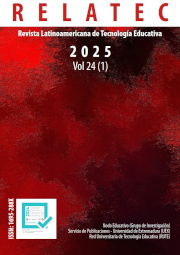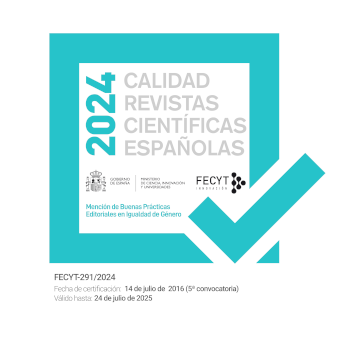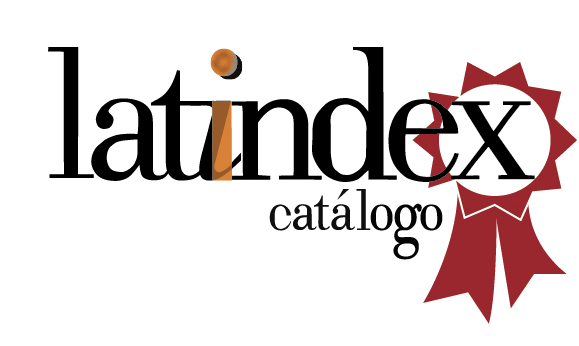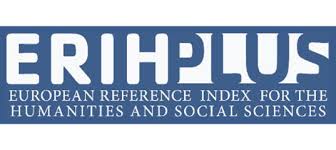Digital technologies in music education. Using Digital Audio Workstations (DAW) with Project-Based Learning (PBL)
DOI:
https://doi.org/10.17398/1695-288X.24.1.101Keywords:
Music Education, Educational Technology, Digital Audio Workstations, Project Based LearningAbstract
BandLab and Walk Band are two mobile and web-based applications that let users create and record their own songs, providing them with a variety of virtual instruments, samples, loops and drum machines. These applications can be used as educational tools to encourage musical learning and creativity in secondary and higher education students. This article discusses the advantages and challenges of using these applications in education and offers some recommendations for their pedagogical use. The objective is to show how BandLab and Walk Band can contribute to the development of musical, artistic and digital proficiency in students as well as create collaborative learning communities. A literature review on previous uses of multitrack sequencers is also done, and some examples of didactic proposals on music creation and musical arrangements are offered on how to integrate these applications in the music curriculum in secondary education and in interdisciplinary projects in higher education. Finally, some challenges and opportunities are presented for research and educational innovation through the use of these technologies in the field of music creation.
Downloads
References
Berrón-Ruiz, E., Arriaga-Sanz, C. y Campayo-Muñoz, E.A. (2023). Recursos tecnológicos para la formación inicial del profesorado de Música: una intervención en el contexto universitario español. Revista Electrónica de LEEME, 51, 16-35. https://doi.org/10.7203/LEEME.51.25680
Brown, A. R. (1999). Music, media and making: humanisin g digital media in music education. International Journal of Music Education, 1, 10-17.
Brown, A. R. (2014). Music technology and education: Amplifying musicality. Routledge.
Calderón-Garrido, D., Cisneros, P., García, I. D. y de las Heras-Fernández, R. (2019). La tecnología digital en la Educación Musical: una revisión de la literatura científica. Revista Electrónica Complutense de Investigación en Educación Musical (RECIEM), 16(1), 1-15. https://doi.org/10.5209/reciem.60768
Carroll, C. y Harris, J. (2023). ‘Because I’m not musical’: A critical case study of music education training for pre-service generalist primary teachers in Australia. British Journal of Music Education, 40(2), 271-286. https://doi.org/10.1017/S0265051722000274
Casanova López, Ó., y Serrano Pastor, R. M. (2016). Internet, tecnología y aplicaciones para la educación musical universitaria del siglo XXI. REDU: Revista de docencia Universitaria, 14(1), 405-421. http://dx.doi.org/10.4995/redu.2016.5801
Dammers, R. J. (2019). The role of technology in music teacher education. En R. Bader (Ed.), The Oxford handbook of preservice music teacher education in the United States (pp. 365-376). Springer.
Faure Carvallo, A., Gustems Carnicer, J. y Navarro Calafell, M. (2020). Producción musical y mercado discográfico: homogeneización entre adolescentes y reto para la educación. Revista Electrónica de LEEME, 45, 69-87. https://doi.org/10.7203/LEEME.45.16625
Fick, J., y Bulgren, C. (2022). Developing 21st-century musicianship: Tablet-based music production in the general music classroom. Journal of General Music Education, 35(2), 4-12. https://doi.org/10.1177/10483713211034434
Giráldez, A. (2012). TIC y educación musical: Una revisión de las líneas de investigación sobre la creación musical en las aulas. Recuperado el 6 de septiembre del 2023, de https://bit.ly/3trzlU4
Giráldez, A. (coord.) (2015). De los ordenadores a los dispositivos móviles: Propuestas de creación musical y audiovisual. Grao.
Hamilton, D. (2021). Hip-Hop Music Education: Engaging Students in Black Culture Creation and Social Justice Advocacy. The Canadian Music Educator, 63(1), 20-28.
Hernández-Sellés, N., Martínez-Cerdá, J.-F. y Sánchez-Navarro, J. (2015). Herramientas y recursos para la creación y consumo musical en entornos virtuales. Revista Electrónica De Tecnología Educativa (EDUTEC), 54, 1-15. https://doi.org/10.21556/edutec.2015.54.706
Lam, C. K. (2023). Technology-enhanced creativity in K-12 music education: A scoping review. International Journal of Music Education, 02557614231194073. https://doi.org/10.1177/02557614231194073
Lage Gómez, C. y Zahonero Rovira, A. (2012). El aprendizaje musical a través del pensamiento creativo: una investigación acción colaborativa en Enseñanaza Secundaria. En F. Guerra López, R. García Ruiz, N. González-Fernández, P. Renés Arellano, A. Castro Zubizarreta (coords.), Estilos de aprendizaje. Investigaciones y experiencias:[V Congreso Mundial de Estilos de Aprendizaje]. Universidad de Cantabria.
Latorre, N. D. (2018). La formación en TIC de los pedagogos de música. Análisis de la situación en las Enseñanzas Superiores de Música. Revista Electrónica de LEEME, 42, 31-51. https://doi.org/10.7203/LEEME.42.13067
Mash, D. S. (1991). Acoustical and electronic instruments in jazz: An educational perspective. The Journal of the Acoustical Society of America, 90(4_Supplement), 2353-2353.
Mendoza Ponce, J., & Galera Núñez, M. D. M. (2011). Tecnología Musical y Creatividad: Una experiencia en la formación de maestros. Revista de la Lista Electrónica Europea de Música en la Educación, 28, 24-36.
Merchán-Sánchez-Jara, J. F. y González-Gutiérrez, S. (2023). Collaborative Composition and Urban Popular Music in Digital Music Didactics. Education Sciences, 13(8), 771. https://doi.org/10.3390/educsci13080771
Nielsen, L. D. (2013). Developing musical creativity: Student and teacher perceptions of a high school music technology curriculum. Update: Applications of Research in Music Education, 31(2), 54-62.
Ocaña-Fernández, A., Montes-Rodríguez, R. y Reyes-López, M.-L. (2020). Creación musical colectiva: análisis de prácticas pedagógicas disruptivas en Educación Superior. Revista Electrónica Complutense de Investigación en Educación Musical, 17(1), 1-16. https://doi.org/10.5209/reciem.67172
Pascual Moltó, I., Cuenca Rodríguez, M. E., y Pastor Prada, R. (2021). Bandlab y Walk Band: aplicaciones para la composición de canciones en Educación Secundaria. En I. M. Monreal Guerrero y D. Carabias Galindo (Eds.), Intersección: arte, sociedad y tecnología en la innovación musical (pp. 12-15). Procompal Publicaciones.
Peters, K. (2015). A guide to Key Stage 1 iPad apps. Incorporated Society of Musicians. www.ism.org/blog/a-guide-to-keystage-1-ipad-apps
Real Decreto 217/2022, de 29 de marzo, por el que se establece la ordenación y las enseñanzas mínimas de la Educación Secundaria Obligatoria. Boletín Oficial del Estado, 76, del 30 de marzo de 2022. https://www.boe.es/eli/es/rd/2022/03/29/217/con
Rosen, D., Schmidt, E. M. y Kim, Y. E. (2013, June). Utilizing music technology as a model for creativity development in K-12 education. In E. Yi-Luen Do, S. Dow, J. Ox, S. Smith, K. Nishimoto, C. Tien Tan (Eds.), Proceedings of the 9th ACM Conference on Creativity & Cognition (pp. 341-344). ACM Digital Library. https://doi.org/10.1145/2466627.2466670
Tejada Giménez, J. (2004). Música y mediación de la tecnología en sus procesos de aprendizaje. Educación XX1(7), 15-26. http://www.redalyc.org/articulo.oa?id=70600701
Tejada Giménez, J. y Thayer Morel, T. (2019a). Diseño, implementación y evaluación de una intervención de formación en tecnología musical basada en TPACK
y ABP en la formación inicial del profesorado de música de Educación Secundaria. RELATEC: revista latinoamericana de tecnología educativa. http://hdl.handle.net/11162/197423
Tejada, J. y Thayer Morel, T. (2019b). Design and validation of a music technology course for initial music teacher education based on the TPACK framework and the project-based Learning approach. Journal of Music, Technology & Education, 12(3), 225-246. https://doi.org/10.1386/jmte_00008_1
Thayer Morel, T., Tejada, J. y Murillo Ribes, A. (2021). La formación tecnológica del profesorado de música en educación secundaria; un estudio de intervención basado en la integración de contenidos musicales, tecnológicos y pedagógicos en la universidad de valencia. Revista electrónica interuniversitaria de formación del profesorado, 24(3), 1-20. https://doi.org/10.6018/reifop.442501
Thorgersen, K. A., y Mars, A. (2021). A pandemic as the mother of invention? Collegial online collaboration to cope with the COVID-19 pandemic. Music Education Research, 23(2), 225-240. https://doi.org/10.1080/14613808.2021.1906216
Watson, S. (2011). Using technology to unlock musical creativity. Oxford University Press USA.
Downloads
Published
Issue
Section
License
Copyright (c) 2025 María Elena Cuenca-Rodríguez, Ignacio Pascual-Moltó, Raquel Pastor-Prada

This work is licensed under a Creative Commons Attribution-NonCommercial-NoDerivatives 4.0 International License.
Authors who publish in this journal accept the following conditions:
1. The Author retains copyright in the article. Upon acceptance of the article, the author shall grant to the Publisher the right of first publication of the article. with the dcoument registered with the Creative Commons Attribution-NonCommercial-NoDerivative 4.0 International (CC BY-NC-ND) license, which allows to third parties to use what is published whenever they mention the authorship of the work and the first publication in this journal.
2. Authors can make other independent and additional contractual agreements for the non-exclusive distribution of the article published in this journal (eg, include it in an institutional repository or publish it in a book) provided they clearly indicate that the work was published for the first time in this journal.
3. Authors are allowed and recommended to publish their work on the Internet (for example on institutional or personal pages) before and during the review and publication process, as it can lead to productive exchanges and a greater and faster diffusion of published work (see The Effect of Open Access).









